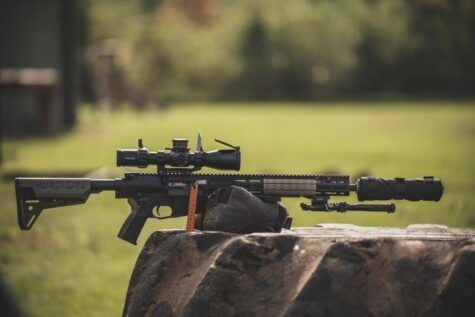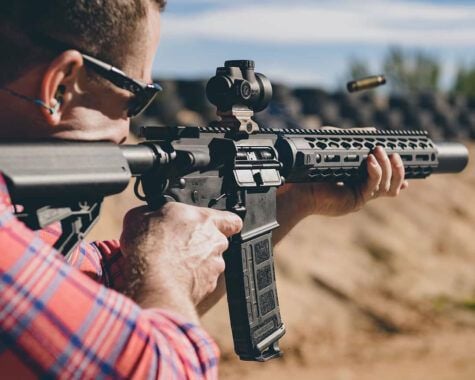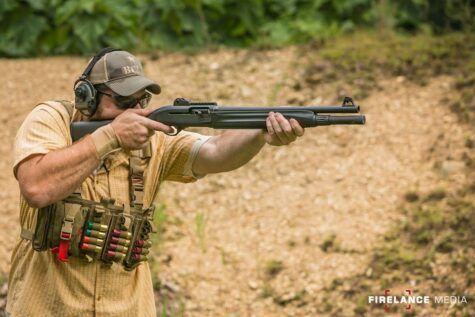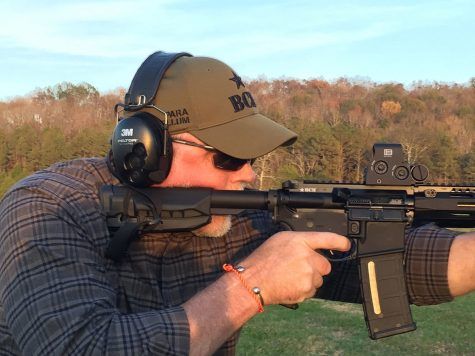Let’s talk about choosing the right buffer for your next build. A lot of attention is paid to the various components in the AR-15 platform. Each shooter has their own opinion on which is the most important to ensure top function in their rifle. Having a great barrel or trigger is critical for accuracy. A quality receiver set can provide a solid base for the remainder of the components. You could even argue that a good optic gives a plinker the possibility to be a precision rifle.
I’m going to argue for a different component though: the buffer. Okay, so maybe it’s not the most important component, but it is a critical piece to keep the whole system running smoothly.
Buffers for Beginners
First, the buffer and buffer spring are housed within the buffer tube, and set the pace for the AR’s cyclic action. After a shot is fired the bolt carrier group (BCG) contacts with the buffer as it moves rearward within the tube and the weight of the buffer and tension in the spring resist the rearward travel of the BCG. When the buffer tube components recoil, the BCG is pushed forward. While all direct impingement AR rifles function essentially the same, there are two main different sizes of buffers (rifle length and carbine length).
The important headline here is that these two sizes are NOT interchangeable. For the purpose of this article we will be focusing on the carbine variety of buffers.
Choosing the Proper Weight
Using different combinations of springs and buffers is a common way to “tune” a rifle. It is important to note though, that the buffer and buffer spring are only two pieces in the puzzle.
The barrel length, gas port size, gas system length, use of a suppressor, caliber of the rifle, etc, will all affect how well the rifle manages the gas during the cycling of the gas system.
The heavier the buffer the longer it takes to move. It will also slow down quicker and smooth out the recoil. Going with too heavy a buffer though can cause the rifle to short stroke (i.e not fully cycle, which will lead to inconsistent extraction and ejection).
Rule of Thumb on Weight
The rule of thumb to follow is that you want the heaviest that will allow your rifle to fully cycle, extract and eject the spent casing, and load a new round in the chamber.
For most builds, a standard carbine buffer is the way to go. A lot of times however, you may find that the gas port on barrel may have a slightly oversized gas port.
This can often lead to your BCG travel too fast, violent extraction, etc. Barrel makers do this so their rifles will still cycle when people use cheaper, underpowered ammo. You can also tell if your system is overgassed by making a note of how the spent casings are ejected. Ideal ejection will throw spent casings in the 3-4 o’clock direction. If it’s throwing the casings ahead of the shooter, the system is overgassed.
Going heavier in this instance will slow down the BCG and lead to better operation, as well as allowing more of the excess gas and carbon to exit the rifle and give you cleaner operation overall.
Common Buffer Sizes:
- Carbine – 3 oz.
- This is most common in traditional carbine-length gas systems. It is made to work with a wide range of ammo and can even be used reliably in some mid-length gas systems.
- Heavy (H) – 3.8oz.
- The first, and lightest, of the “heavy” buffers (also called an H1 buffer). If you are running into any issues with a hard running system, or are getting violent or erratic extraction then switching to an H is the most common suggestion.
- H2 – 4.6 oz – 4.7oz.
- This can be used is some mid-length systems, but the most common use is in pistol builds featuring sub-16 inch barrels to offset the more violent cycling of the action. Also, if you have a full auto gun or you’re shooting a lot of 5.56 NATO then an H2 may be the way to go.
- H3 – 5.0 oz to 5.4 oz .
- With the AR platform coming in many heavier calibers such 7.62X39, .300 AAC, .224 Valkyrie, .458 SOCOM and the .50 Beowulf, an extra heavy buffer is recommended. The H3, as well as HSS and XHfit the bill on these builds.
- HSS – 6.5oz.
- XH – 8.5oz.
- Pistol Caliber Builds – 5.0 oz. – 8.5 oz.
- Is a pistol caliber build, the nature of the blowback design is there is not a traditional gas system involved to soften the blow the BCG delivers to the buffer. That coupled with a typically heavier mass BCG means that a larger buffer is used to smooth the action and provide reliable function.
- There are also extended PCC buffers for blow-back systems. Because the BCGs used are shorter, due to lacking the bolt. This creates unnecessary over travel using a standard carbine buffer. This means that when the bolt is returning home, it builds up more force and can cause undue stress to the bolt catch on LRBHO PCC builds.
1 - 1Share





